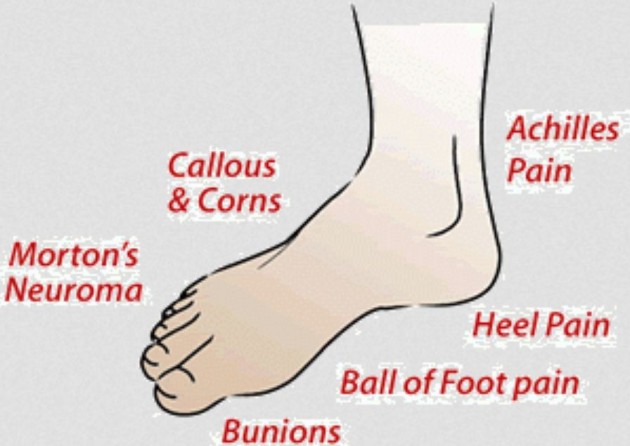
Morton’s Neuroma
Morton’s Neuroma is a common cause of foot pain on the sole of foot. It is caused by a thickening of a nerve in the sole of the foot which leads to foot pain and sometimes numbness in the forefoot.
Pain Sole of Foot: Symptoms of Morton’s Neuroma
Morton’s Neuroma is a common cause of pain under the sole of the foot, the normal symptoms include:
• Pain on sole of foot. The most common place to feel the pain is in between the 3rd and 4th toes
• Numbness in toes, again the most common place to feel the numbness is under the space between the 3rd and 4th toes
• A sensation like walking on a pebble
• The pain may increase when walking, standing and running, but stop afterwards.
Pain Sole of Foot: Causes of Morton’s Neuroma
There is no one cause for Morton’s Neuroma, but certain factors make it more likely that a person will suffer from it:
• Women are 8 – 10 times more likely to get Morton’s Neuroma
• Wearing high heels frequently increases the risk of developing pain in the sole of the foot
• Participating in a lot of high impact sports
• Having a job which involves long hours of standing or walking
• Wearing shoes with a narrow toe box.
Pain Sole of Foot: Treatment of Morton’s Neuroma
The first treatments to try to ease the symptoms of pain in the sole of the foot from Morton’s Neuroma are very simple:
1. Adapt footwear; flat well cushioned shoes with a wide toe box can give relief.
2. Use a metatarsal support: Evidence shows that a metatarsal support will eliminate the pain in 30% of cases. The nerve comes to the toes in between the toe bones, when there is a thickening of the nerve it can cause pain if there is not enough space for it and thus is gets squashed. A metatarsal support lifts the foot from underneath, spreading the bones apart slightly and therefore giving more room for the nerve and taking the pressure off it.
If these first line treatments do not give relief more invasive treatments include
3. Corticosteroid injection around the nerve has been shown to give up to 12 months pain relief
4. Surgery, the nerve can be taken out. This will leave some numbness, but in 75% of cases eliminates pain.
Read more news from our Physiotherapy section.